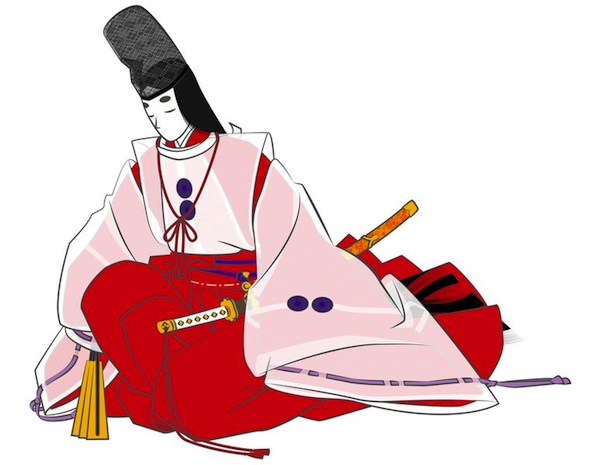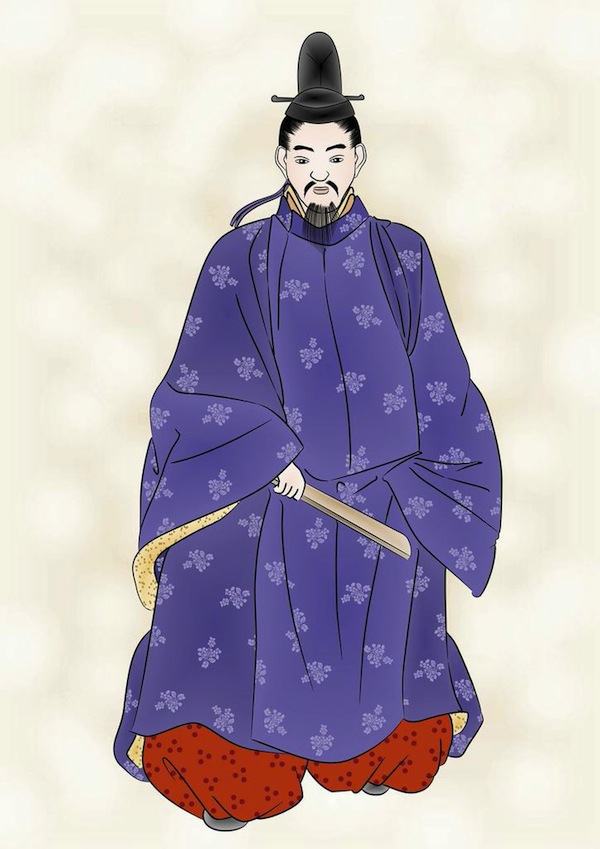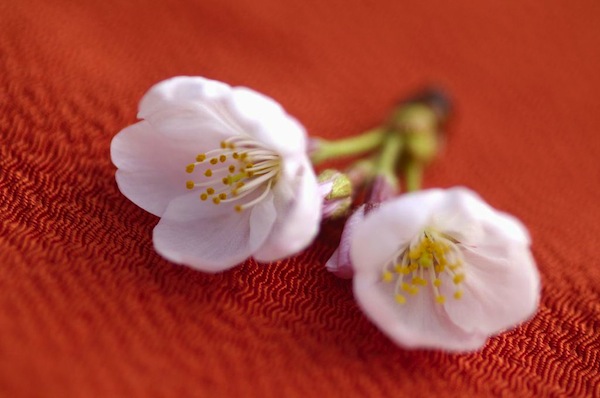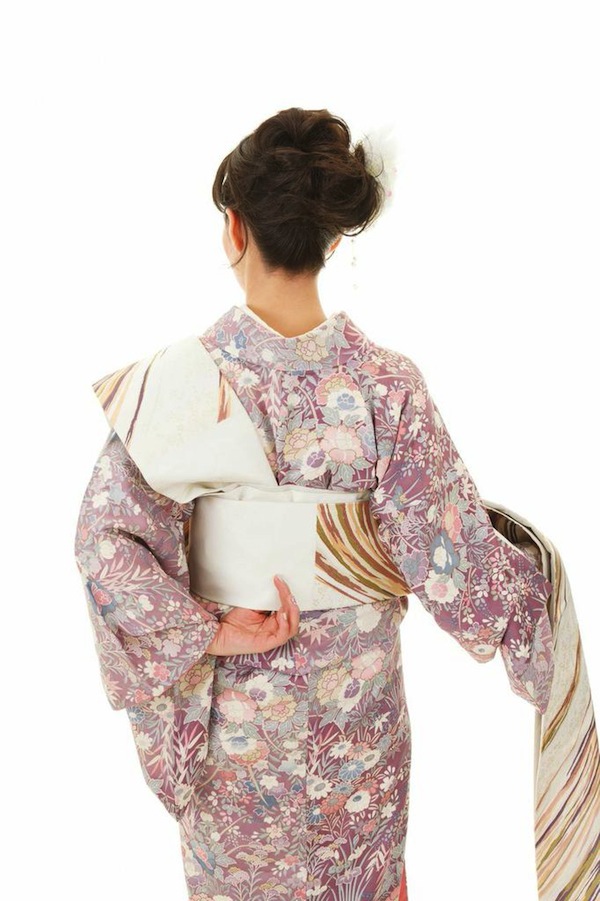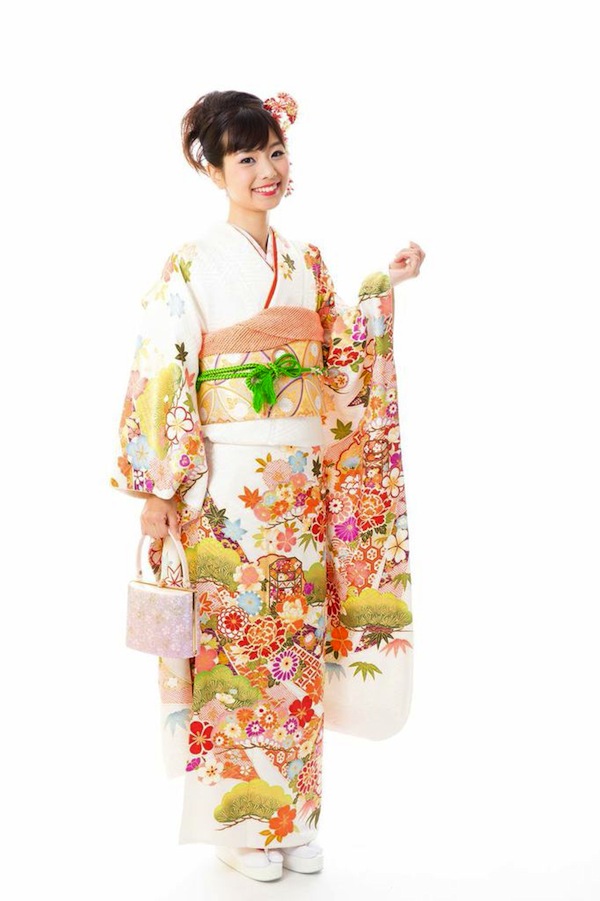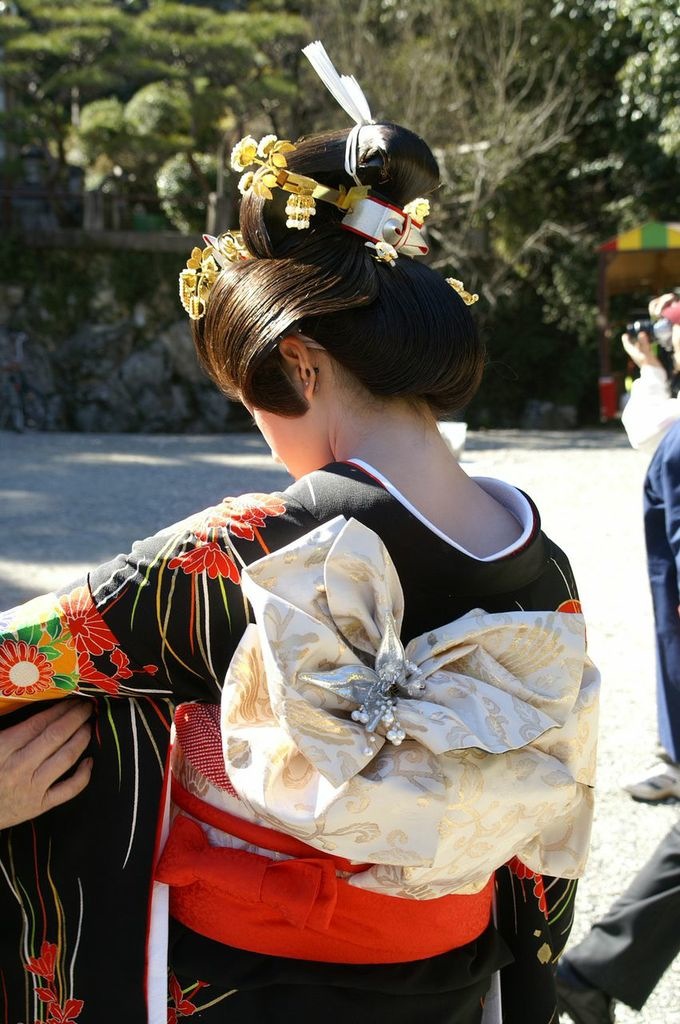
Ohikizuri are kimonos of which the bottom is made very long so that it drags on the floor. Those kimonos are used a lot as wedding clothes, but they are also used for theatrical costumes and geishas also wear them. A long-sleeved ohikizuri kimono would be called a “hikifurisode.” Originally in the Edo Era, the bottoms of the short-hemmed kimonos gradually became longer, and although long-bottomed kimonos became in style they were not necessarily regarded as formal wear. Also, the “ohashori” was invented to tuck up the bottom of the kimonos for ease of walking, originally there were no ohashori made with ohikizuris.
However, because making them with ohashoris makes it somewhat easier to move in ohikizuris and since it doesn’t throw off how the ohikizuri will look on a person, currently the plurality of ohikizuris also include ohashoris. Because a person will look beautiful in a spread out kimono bottom, it is a popular style in the old days and now. However, one cannot go outside wearing the ohikizuri in that fashion. It’s acceptable to hold the kimono bottom in one’s hand for a short period of time, but it’s easier to use a rope at the bottom of the obi to hold up the bottom. That rope is called both the “shigoki” and sometimes “kakaeobi.”

